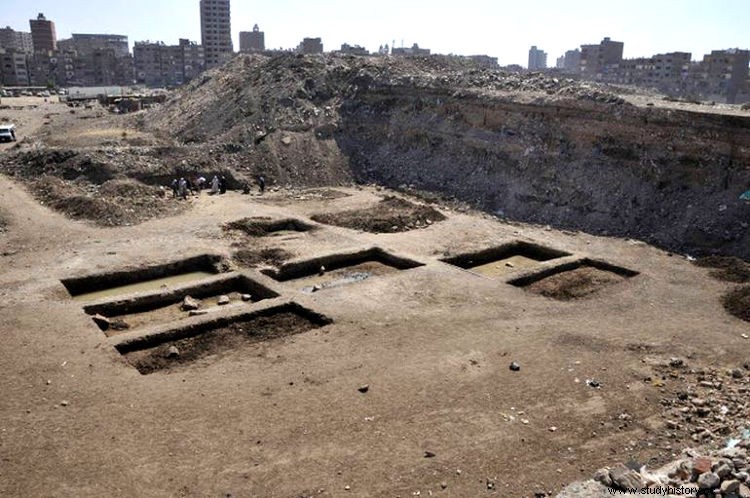About a month ago, in mid-April, we reviewed here the discovery of a station for the sacred boat of Khnum; I was in the so-called Nectanebo Pavilion , on the island of Elephantine. Well, that name continues to be associated with new surprises because the discovery in 2015 of a two thousand-year-old temple in Iunu, better known by its Greek name of Heliopolis , near Cairo, continues to provide glimpses of its past.
Nectanebo (pictured below) is the Hellenized name for Jeperkare Najtnebef , sovereign who reigned between 378 and 361 BC, after deposing Neferites II. That period was characterized by two things:the resistance against the Persian reconquest attempts and the establishment of a new dynasty, the XXX , which would be the last with native pharaohs on the Egyptian throne.
Afterwards, the country returned to being a Persian satrapy and, later, it was conquered by the Macedonians of Alexander the Great, who created their own dynasty (that of the Ptolemies).

The fact is that Nectanebo built a great sanctuary in Heliopolis, right where the Cairo neighborhood of Ain Shams is now located, in Matariya (the northeastern part of the capital) and a joint archaeological mission between Egyptians and Germans has been working on it for a while.
In an official statement, dr. Eldamaty , Egyptian Minister of Antiquities, reported that the lower part of a chapel has just been discovered raised with basalt blocks, a bronze figurine of the goddess Bastet and part of a royal statue kneeling in an attitude of presenting an offering to the gods.
What is truly interesting is that an inscribed cartouche has made it possible to identify who the statue represents:as Aiman Ashmawy explained , head of the Egyptian team, this is Merineptah , one of the sons of Ramesses II , which falls under the XIX dynasty; that is, eight centuries earlier to Nectanebo.

Contemporary with this one are the latest findings, consisting of one of the missing pieces of the statue, remains of columns and the roof , which is decorated with stars while the basalt bears inscriptions alluding to the god Hapi and the nomes (provinces).
According to Eldamaty, it is the first time that a chapel has been located on that site and now the work is focused on draining the underground water to be able to complete the task, since the perimeter wall was made of adobe and is in danger of softening and spoiling.

For his part Dietrich Rau , who is in charge of the German mission, added that they hope to bring to light the rest of that chapel next season of excavations, and by then, once the architecture has been cleared, more objects will probably begin to be rescued.
It remains to be seen how wide the class of pieces will be, since everything seems to indicate that in the same place where the Nectanebo sanctuary stands there were previous human settlements corresponding to the predynastic and protodynastic periods, dating back to the fourth millennium BC
In fact, there are also indications that this occupation continued in later times; more specifically in Ptolemaic times , so archaeologists are in for quite a puzzle.

